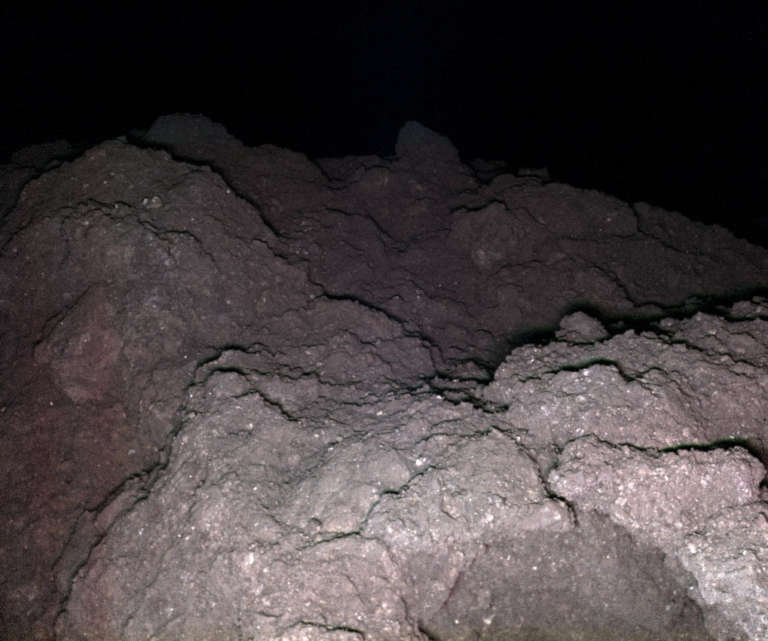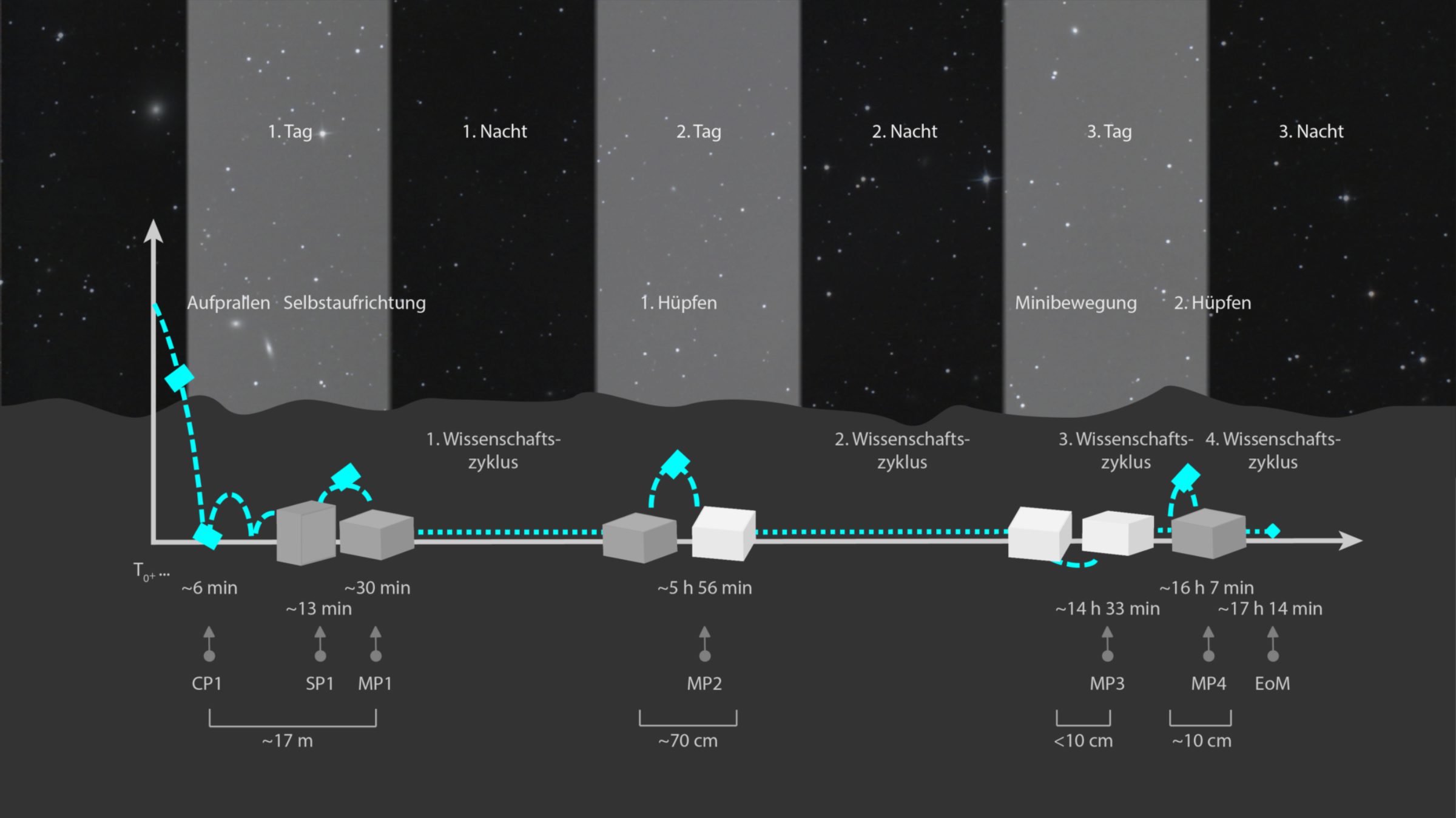Jason Davis • Aug 28, 2019
Hayabusa2 Lander Mania: Results from MASCOT, Plans for MINERVA-II2
Japan's Hayabusa2 spacecraft only has about 3 months left at asteroid Ryugu, and between now and its departure it’s going to drop more stuff on the surface. Although operations are still ongoing, mission scientists have been busy: there’s a new paper out in Science analyzing what the MASCOT lander saw as it tumbled around the asteroid's rocks and boulders for 17 hours last October.
Hayabusa2, Japan's mission to Ryugu and other asteroids
Japan's Hayabusa2 spacecraft returned a sample from asteroid Ryugu to Earth in December 2020.
MINERVA-II2
Remember MINERVA-II1, the pair of hopping rovers that Hayabusa2 dropped on Ryugu in September 2018? There's a third rover, MINERVA-II2, still aboard the spacecraft that was built by a consortium of Japanese universities. As I reported in November 2018, that rover, which has a slightly different design than MINERVA-II1, is believed to only be partially functioning.
Even though MINERVA-II1 may not send any data back to Hayabusa2, JAXA is going to drop it anyway, from a height of about a kilometer. Hayabusa2 will track the rate at which the mini-rover falls, measuring Ryugu's gravitational field in the process and providing more insight on the asteroid's interior. A date hasn't been set for this yet, but JAXA's latest press briefing says the space agency will provide an update on 24 September.
Hayabusa2 is going to prepare for the MINERVA-II2 drop by releasing 2 more target markers on 5 September from the same height. The target markers, you might recall, are baseball-like shiny objects that each contain a copy of names collected by The Planetary Society and JAXA prior to the mission. Counting the 2 target markers already on Ryugu next to the 2 sample collection sites, this will make 4 out of 5 total markers Hayabusa2 has dropped. The makers will be released 5 minutes apart. One will be aimed at a polar region, and the other will be aimed at the equator. Presumably this will also provide some additional gravitational-field data, since the markers will be passing over different regions of the asteroid.
MASCOT
The new paper on the MASCOT landing is paywalled, but you can read the gist and see key images via this press release from the German Aerospace Center, DLR. There are also some raw MASCOT images published here.
One of the things from the paper I really liked was a description of exactly what happened to MASCOT after Hayabusa2 released it from a height of 41 meters above the surface. MASCOT fell for 6 minutes, struck a rock, and went tumbling across the surface like a gaming die in slow motion, finally coming to a rest on its side 7 minutes later. It snapped pictures while doing all this. Here's a video of the wild ride:
Images from Hayabusa2's MASCOT lander These 20 images were captured by the Mobile Asteroid Surface Scout (MASCOT) after it was deployed by Japan's Hayabusa2 spacecraft from a height of 41 meters above asteroid Ryugu on 3 October 2018. MASCOT fell for 6 minutes, struck a rock, and went tumbling across the surface like a dice in slow motion, finally coming to a rest on its side 7 minutes later.Video: MASCOT/DLR/JAXA
MASCOT then used its internal swingarm to try and orient itself upright. Unfortunately, it flipped upside-down instead, finally coming to a rest on its back 17 meters away from its initial point of contact with the surface. There, it settled in for its first night on Ryugu (remember, the asteroid rotates once every 7.6 hours). During the night it took some pictures of the stars, and as a fun bonus saw Jupiter and Saturn!
When morning came, MASCOT finally righted itself, moving 70 more centimeters in the process. During its second night on Ryugu, it used its red, green, and blue LEDs to illuminate its surroundings so scientists could create a true-color image.

On day 3, MASCOT did what its team calls a "mini-move," shifting slightly so it could capture stereo images. It made a final little hop before its third night began, ending up on its back in the process. And that's about when the valiant little lander’s battery ran out, 17 hours and 14 minutes after being released from Hayabusa2.

During its descent and dice roll, MASCOT saw 2 distinct types of rocks, distributed roughly equally around Ryugu's surface. One type is comparatively brighter (remember, Ryugu is very, very dark) and has smooth faces and sharp edges, while the other type is darker with cauliflower-like, crumbly surfaces. The rocks MASCOT imaged during its second night were of the cauliflower variety, and appear to include small grains that are rich in calcium and aluminum. That makes the rocks reminiscent of a rare type of meteorite called carbonaceous chondrites. (Specifically, for meteorite fans: they are most similar to CI2 chondrites like the Tagish Lake meteorite.) These rocks are about 4.5 billion years old—practically the age of the solar system. They've never been melted by volcanic processes or impacts from other objects, though they’ve been warm enough for liquid water to change their chemistry.
Okay, so Ryugu has 2 types of rocks, and some were formed during the birth of our solar system. Where did Ryugu come from? Here's what Ralf Jaumann, head of the MASCOT science team and lead author of the new paper, says about this:
"Ryugu could have been formed following the collision of two bodies made of different materials. As a result, it would have broken up, before the fragments came together under the influence of gravity to form a new body made up of the two different types of rock. Alternatively, Ryugu could be the remnant of a single body whose inner zones had different temperature and pressure conditions, thus resulting in the formation of two types of rock."
Another interesting MASCOT finding is that there's no regolith or dust in these images, just rocks. The unexpected rockiness of Ryugu (and likewise of Bennu, seen by the OSIRIS-REx mission) has been an important finding. In theory, there should be regolith on Ryugu for the same reason it's everywhere on the Moon: continual micrometeorite bombardment.
Jaumann speculates that the micrometeorite dust either escapes into space thanks to Ryugu's weak gravity, or settles into cavities beneath the surface. As Emily Lakdawlla reported in a post on Ryugu's initial science results, the asteroid is basically a rubble pile riddled with gaps and pockets. It has a density of just 1.2 grams per cubic centimeter—barely denser than water ice. Since it’s made of rocky material with a density of about 3 grams per cubic centimeter, that means it has to have a lot of empty space.
All this means Ryugu is extremely fragile, which has some implications for planetary defense. Ryugu is a C-type (chondrite) asteroid; roughly 75% of known asteroids are C-type. If a Ryugu-like asteroid were to come hurtling towards Earth, blowing it up might be the worst thing we could do, writes Jaumann:
"In the event that it was impacted with great force, the entire asteroid, weighing approximately half-a-billion tonnes, would break up into numerous fragments. Then, many individual parts weighing several tonnes would impact Earth."
Fortunately, there's a reason that carbonaceous chondrite meteorites—possibly made from the same type of rock that MASCOT saw on night 2—are rare. They're so porous and fragile, they burn up in Earth’s atmosphere. That was a finding from a paper on MASCOT's radiometer published in July.
But just how big of a C-type asteroid chunk can Earth’s atmosphere handle? The scientists behind the radiometer paper say that "...further research is necessary to determine the maximum asteroid size for which this atmospheric protection is effective." Sounds like we better keep working on our planetary defense efforts!
Let’s Go Beyond The Horizon
Every success in space exploration is the result of the community of space enthusiasts, like you, who believe it is important. You can help usher in the next great era of space exploration with your gift today.
Donate Today

 Explore Worlds
Explore Worlds Find Life
Find Life Defend Earth
Defend Earth


